Aspen and alder wood are two popular choices for interior woodworking, each with unique characteristics. These are mainly used for interior furniture. Aspen wood is generally softer and lighter than alder wood. In terms of color comparison, alder wood is darker than aspen.
What is Aspen Wood?
Aspen is a light-colored wood that can range from white to light cream. It is considered a lightweight hardwood with a relatively low density. Aspen wood is commonly used for interior applications such as furniture, cabinets, and millwork.
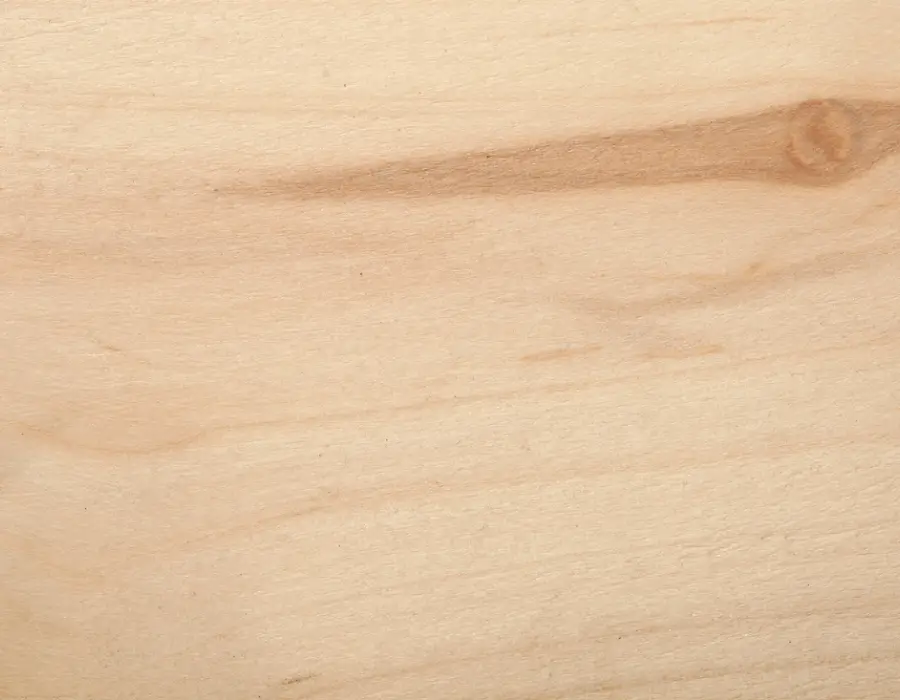
Aspen is the name of several species with almost similar properties, all native to cold regions. The height of trees of all its species can range from 15 to 30 meters (50-100 feet).
What is Alder Wood?
Alder is a durable and stable hardwood, moderately lightweight with a medium density. Alder wood typically has a light tan to reddish-brown color with a straight and even grain. It is commonly used for furniture, cabinetry, doors, millwork, and molding.
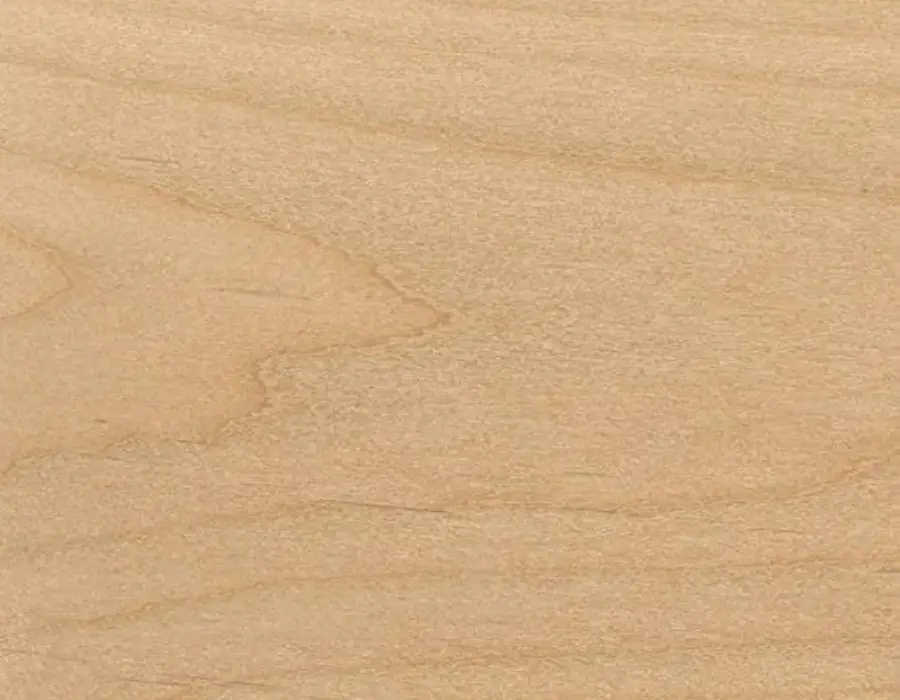
Alder is also the common name for a group of tree species (about 35 or more) native to many areas of the Northern Hemisphere. The height of the Alder tree is about 10- 30 meters. The lifespan of alder trees is approximately 100 to 120 years.
| # | Aspen | Alder |
| Scientific Name: | Populus tremuloides | Alnus |
| Tree size: | 15-30 meters | 15-30 meters |
| Color / Appearance: | Sapwood is white, and light brown heartwood | Light yellow to reddish |
| Workability: | Good workability | Great workability |
| Uses | Boxes/crates, veneer, plywood, and medicine. | Veneer, plywood, furniture, cabinetry |
| Availability: | Rarely available in bulk stock. | Easily available |
Aspen vs Alder Wood Uses
Aspen Wood Uses
Furniture Manufacturing:
Aspen wood is primarily used for indoor furniture and cabinets. Its light color and fine texture make it suitable for creating various furniture items, from tables and chairs to cabinets. It can also be used to construct kitchen cabinets, bathroom vanities, and other storage solutions.
Interior Paneling:
Aspen wood is famous for making interior paneling and commercial spaces. Its light color brightens interiors, creating a visually appealing and welcoming atmosphere.
Craftsmanship and Carvings:
Due to its excellent workability, aspen is often chosen for detailed craftsmanship and carvings. Artisans appreciate its responsiveness to carving tools, allowing for the creation of intricate designs and patterns.
Wooden Toys:
Aspen wood is soft and easy to carve, making it suitable for crafting wooden toys.
Alder Wood Uses
Furniture:
Alder wood is widely used for making furniture. Its straight grain and relatively even texture make it a good choice for tables, chairs, cabinets, and more.
Millwork:
Alder wood’s stability and consistent grain pattern make it a preferred choice for various millwork applications. It is used to make interior doors, moldings, and trim.
Musical Instruments:
Alder wood is a popular choice for making electric guitars and basses. Its lightweight nature and balanced tonal qualities enhance the instrument’s overall performance and sound.
Wooden Flooring:
Alder wood is used for engineered wood flooring. Its stability and ability to take stains well contribute to its appeal in flooring applications.
Carving:
It can be easily trimmed and carved. Therefore, it is the best toy and wooden decorative item.
Aspen vs. Alder Wood Workability
Aspen wood is easy to work with hand and machine tools than Alder wood because Aspen wood is softer than Alder; both types of wood hold glue, nail, and screws well.
Alder wood is noticeably softer than other hardwoods and allows easy cutting, shaping, and sanding. Both these woods do not require pre-drilling to insert nails or screws.
If you plan to apply stain, Aspen wood will take stain and paint well. However, staining Alder wood can be challenging because it tends to absorb stains unevenly, resulting in a blotchy finish.
Aspen vs Alder Wood Grain/Appearance
Aspen wood is light cream and white in color. This makes it an excellent choice for projects where a bright and airy finish is desired. On the other hand, Alder wood is almost white when freshly cut, but its color transforms with exposure to air, becoming light brown with a yellow or reddish tinge.
Aspen wood has a fine and uniform grain pattern, contributing to its smooth and consistent appearance. Alder wood has a straight and even grain pattern, much like aspen.
Which is Harder: Aspen or Alder Wood?
Generally, most species of aspen have a lower density than most of the alder species since many species of aspen and alder have different hardness and dry weight. Here are the Janka Hardness values of the most popular wood species of Aspen and Alder. So you can get a idea how hard is that.
Aspen: Quaking Aspen has a Janka hardness of 350 lbf (1,560 N), European Aspen has a hardness of 380 lbf (1,650 N), and Bigtooth Aspen has a hardness of 420 lbf (1,870 N).
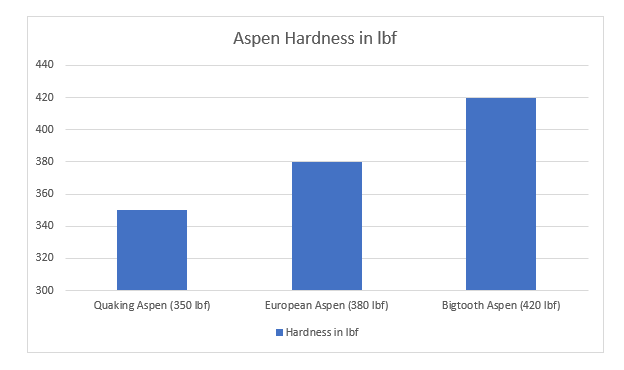
Alder: The hardness values for red alder, European alder, and gray alder are 590 lbf (2,620 N), 650 lbf (2,890 N), and 770 lbf (3,410 N), respectively. Alder wood is medium hard, so it is ideal for cabinetry and musical instruments (electric guitar bodies).
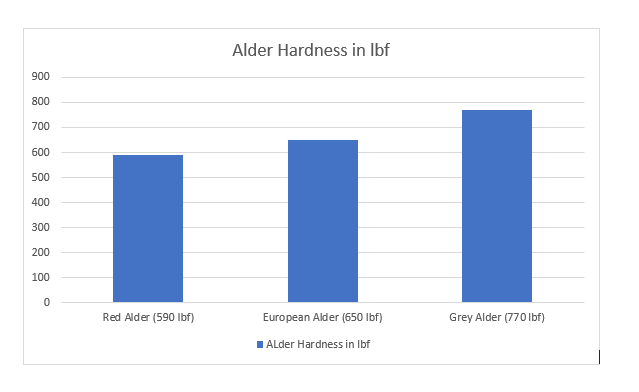
How to Identify Aspen Tree?

- Aspen leaves are rounded and similar in shape to a heart.
- In March and April, the flowers appear before the new shoots. Its male flowers are 12 cm long and brown in color.
- Aspen trees bear fruits in May and early June.
- The bark of aspen is greenish-gray, and it darkens overage.
How to Identify Alder Tree?

- Flowers appear before the leaves in early spring. Both male and female flowers grow in the same tree. The length of the male flower is (about 5–10cm).
- Fruits ripen in October and change from green to brown as they dry.
- Alder’s bark is greyish and rough in color.

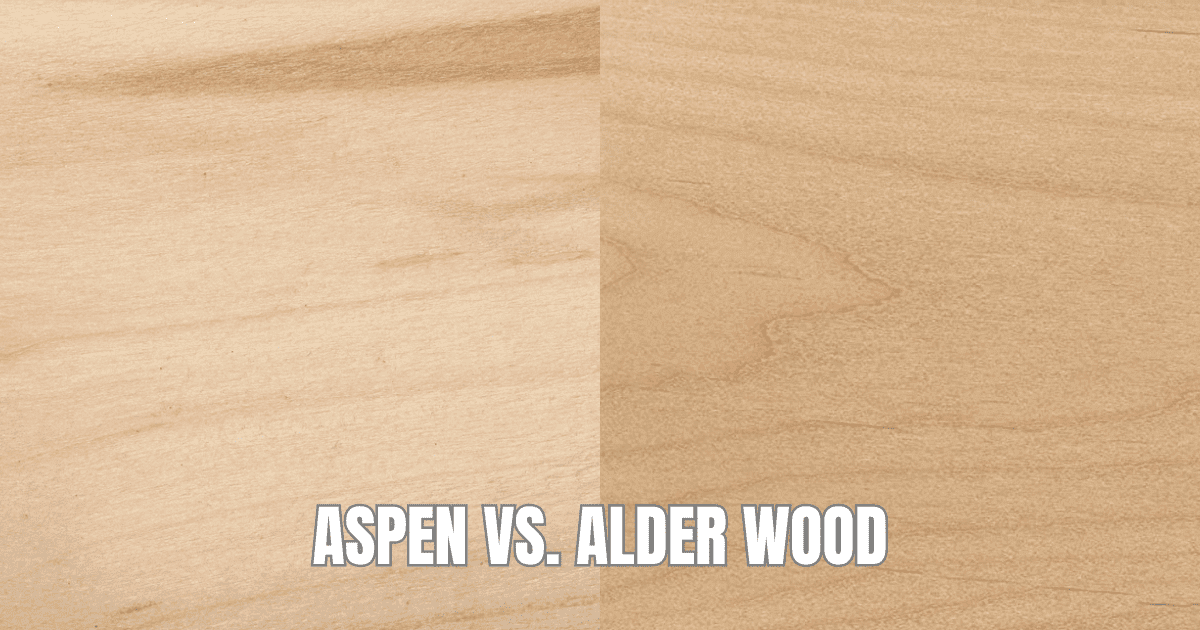
Comments are closed.